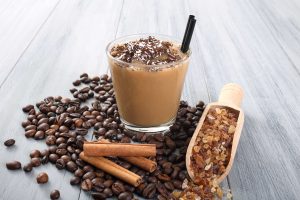Flavours: you experience them every day. For some, food is one of life’s daily pleasures, but do you ever consider the science behind the flavours you taste? One of our clients, Synergy Flavours, is a leading manufacturer and supplier of flavourings, extracts and essences to the global food and beverage industry. We also work to support the UK Flavour Association, which champions this dynamic and long-standing British industry. Flavour development is heavily technical and uses scientific analysis and sensory evaluation to create concepts suitable for industrially produced consumer products.
This blog lifts the lid on the science behind flavourings and the processes used to create them. Be warned this might have you analysing everything you eat!
Firstly, adding or altering flavours of food can be needed for a wide range of reasons including:
-
- Loss of flavour through food production, transport or storage
- To reduce the cost of developing products
- To mask unpalatable base ingredients
- To add variety and interest
- To reduce/remove fat, sugar or salt without loss of flavour
- To replace raw materials that are in short supply.
The basics
All foods are made up of different flavour compounds, the interaction of taste, aroma and texture contribute to the overall sensation of flavour. This is true for all foods, from apples to fast food. For example, coffee has a strong natural aroma which significantly contributes to its overall flavour.
Any flavour contains a number of natural or synthetic chemical groups that create the desired taste. These can be either simple blends or a complex mix of materials. Commonly used molecules include acids such as butyric acid which can be used to create cheese, dairy and fruit flavours. Or sulphurs, such as dimethyl sulphide, might be used when creating tomato, sweetcorn, onion or strawberry flavours.
Analytical techniques
In flavour R&D, flavourists are generally either tasked to create a suitable flavour profile for a certain product or component, or mimic the flavour of an alternative product that, for example, contains more fat, sugar, salt or other ingredient than is desired. Flavourists would first identify the flavour chemicals and odorants that make a product or food taste the way it does. There are a variety of extraction methods that can be used to extract these from any food or food matrix:
- Solid Phase Micro Extraction (SPME): identifies the aromatics in the headspace of the sample
- Liquid-Liquid Extraction (LLE): extracts aromatics from simple food matrices
- Solvent Assisted Flavour Extraction (SAFE): Separates aromatic compounds from fat, sugar and protein. This method can handle large sample quantities.
The extracted compounds are then analysed using gas chromatography mass spectrometry (GC-MS) to separate and identify individual flavour compounds. When creating a lemon flavour for a yoghurt, for example, this process enables a flavourist to create an authentic lemon flavour.
When developing a flavour for a fortified product such as a protein shake, flavourists have to contend with the possible flavour challenges of the healthy ingredient, so gas chromatography olfactometry (GCO) can be helpful. A human assessor is used to detect which volatiles produce specific aromas. Once the chemicals are extracted, flavour pairing techniques can be used to identify the inherent notes that might contribute to an unpleasant taste and find flavours that work with them to either mask, complement or even accentuate them, depending on the application. Protein often has bitter flavour notes (via compounds such as Phenylacetic acid), so a coffee or dark chocolate flavouring might be used as consumers expect bitterness from that flavour, so don’t find it unpleasant.
Everyday examples
In meat-free products and meat analogues (or fake meat!), extracting the compounds that create a distinct meaty taste is essential to making great tasting alternatives.
Another example of where flavours can have a big impact is in reformulation to reduce salt and sugar, two ingredients which build on and improve the taste of a lot of products. When reformulating products, flavours play a huge role in replacing the hole left by salt and sugar to maintain the original taste. Reformulation has been in the spotlight recently with the sugar reduction regulations, committing all manufacturers to a 20% reduction in sugar by 2020. The addition of the childhood obesity plans, has seen the Soft Drinks Industry Levy introduced in 2018 and a focus on calorie reduction through initiatives such as the Change4Life 100 calorie snacks campaign, are helping to support healthier choices without the loss of flavour.
Next time you’re picking up a prepared food product in a supermarket, or enjoying a flavoursome snack, consider the science that will have gone into stimulating your tastebuds!
Follow us on Twitter and LinkedIn to stay up to date with our British Science Week activities!
By Alexandra Walton, Senior Account Executive at The Scott Partnership.





